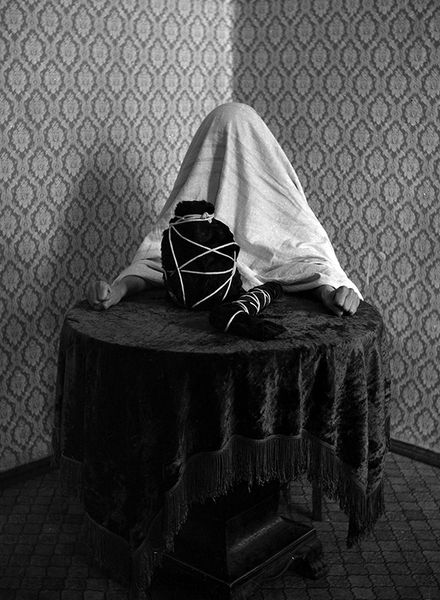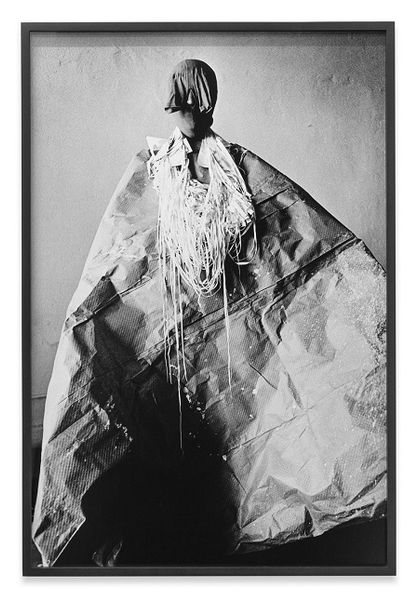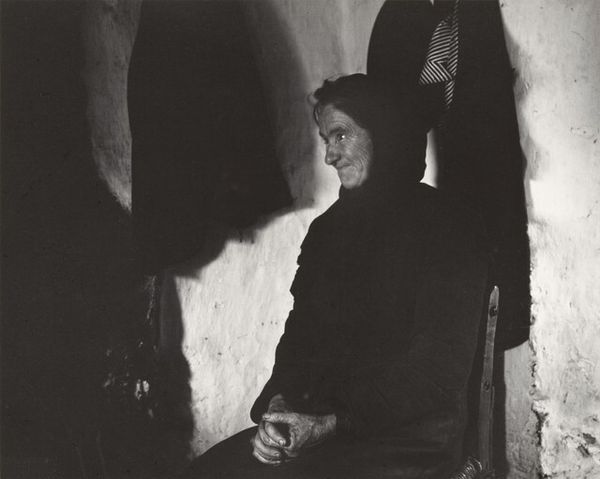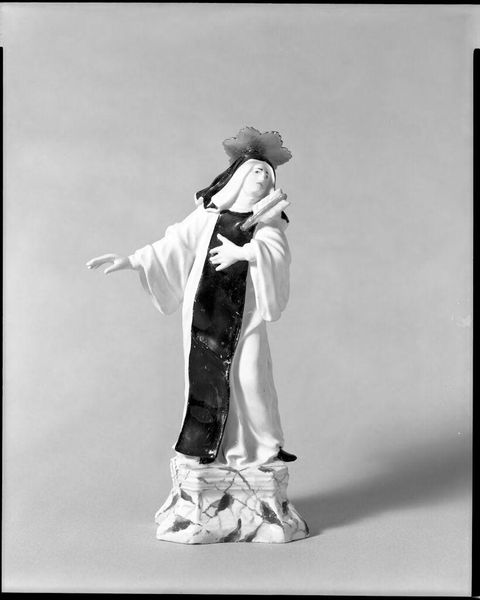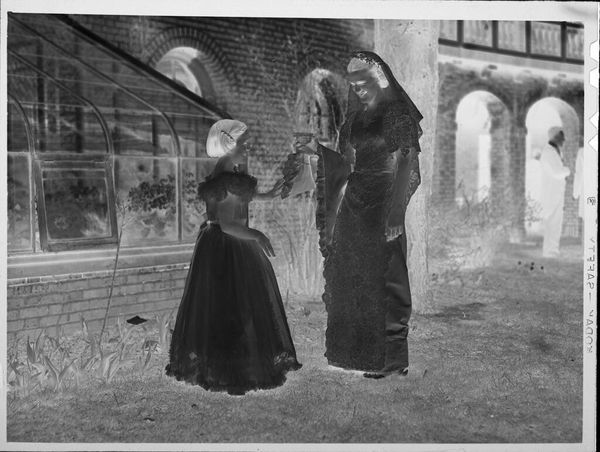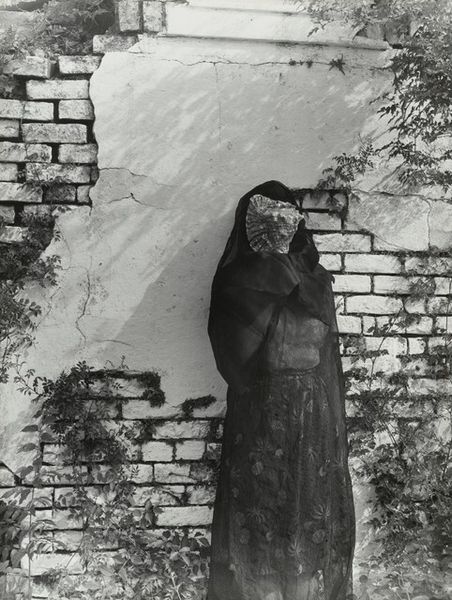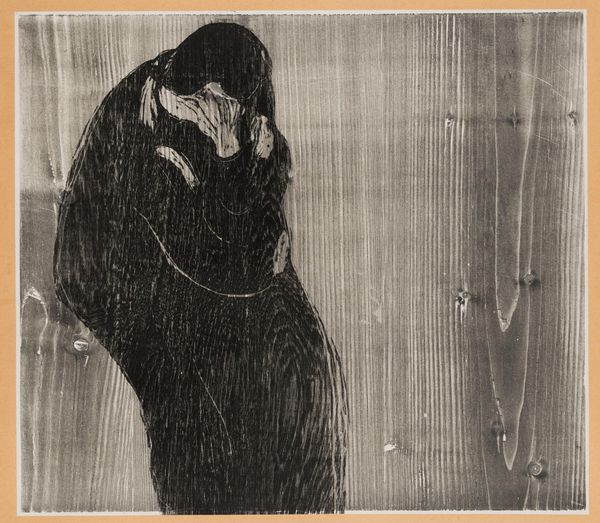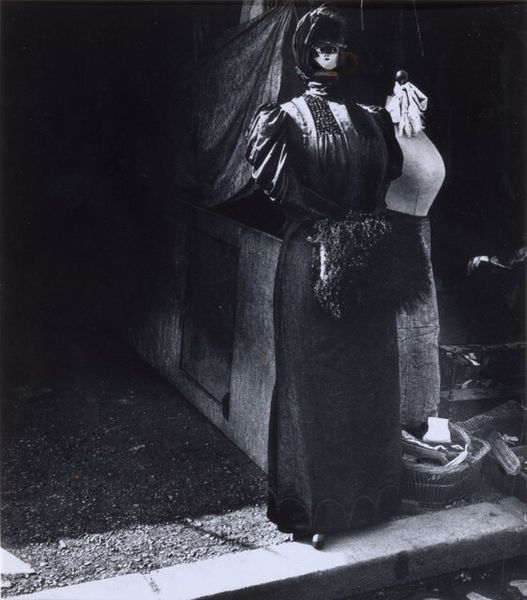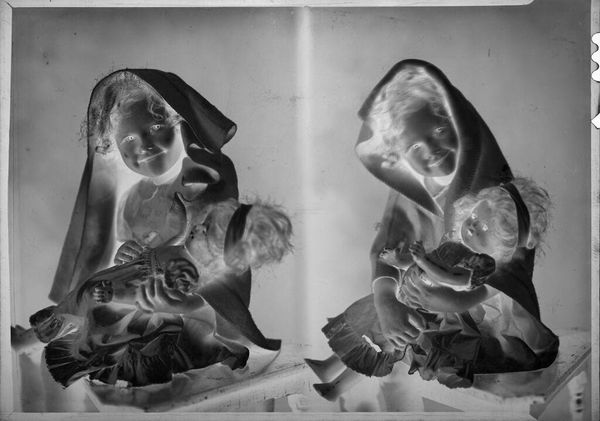
Baqari’s wife. Studio Shehrazade, Saida, Lebanon, 1957. Hashem el Madani 2007
0:00
0:00
Dimensions: image: 190 x 289 mm
Copyright: © Akram Zaatari, courtesy Hashem el Madani and Arab Image Foundation, Beirut | CC-BY-NC-ND 4.0 DEED, Photo: Tate
Curator: This arresting black and white photograph, taken by Hashem el Madani in 1957 at Studio Shehrazade in Saida, Lebanon, captures Baqari's wife holding a large vessel. Editor: The stark contrasts are immediately compelling, creating a sense of dramatic intensity. The composition leads my eye directly to the subject's poised expression. Curator: The woman's gaze is direct, her ornate headdress framing her face, while the vessel itself, cradled in her arms, appears both functional and symbolic. Editor: Precisely, water vessels often represent purity, life, and the feminine principle in various cultures. The darkness within the pot offers a compelling visual enigma. Curator: Indeed. Madani's use of chiaroscuro emphasizes the textures—from the smooth surface of the jug to the fabric of her attire. Editor: Ultimately, this image captures a specific moment and also connects to enduring themes of womanhood and cultural identity across time. Curator: A potent observation. This photograph, through its careful construction, transcends its immediate context. Editor: Leaving us to consider the enduring power of visual symbols.
Comments
tate 7 months ago
⋮
http://www.tate.org.uk/art/artworks/zaatari-baqaris-wife-studio-shehrazade-saida-lebanon-1957-hashem-el-madani-p79460
Join the conversation
Join millions of artists and users on Artera today and experience the ultimate creative platform.
tate 7 months ago
⋮
This work is one of a series of black and white silver gelatin photographs of varying sizes that are collectively titled Objects of study/The archive of studio Shehrazade/Hashem el Madani/Studio Practices. All of the photographs were taken by the Lebanese commercial photographer Hashem el Madani between 1948 and 1982 and compiled into the present group, 117 of which are in Tate’s collection, by the Lebanese artist Akram Zaatari. All of the photographs include people, either alone, in pairs or in small groups, and most were taken in Madani’s studio, although some were shot outside and in his subjects’ homes. The series features men and women and covers a wide age range from babies to elderly people. Almost all of the sitters assume poses deliberately for the camera, sometimes accompanied by props or costumes, and most gaze directly towards the lens. Many of the pictures show subjects interacting in various ways, including embracing, kissing and acting out scenes, such as a mock wrestling match. The photographs are mostly tightly cropped, with the sitter or sitters filling most of the frame, although in some cases the figures are positioned further away from the camera, for instance when shown sitting at a table or standing behind a chair. The photographs tend to have sparse backgrounds, often dominated by a blank posterior wall. They are mounted on white paper, displayed in plain white frames and signed on the back by Madani. Many of them have been organised into categories by Zaatari – such as a group featuring men dressed as Syrian resistance fighters and a collection depicting newly married couples – while the rest are presented individually. Zaatari has stated that although he prefers these groups to be displayed together, this is not a requirement (Akram Zaatari, email to Rachel Taylor, 24 April 2008, Tate Acquisition file).

